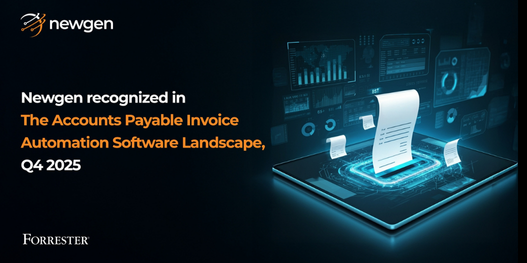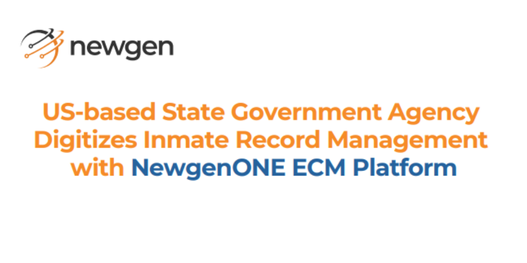Credentialing remains a foundational administrative function in healthcare, ensuring providers meet all regulatory, legal, and organizational requirements, prior to being included in a network or authorized to deliver services. Yet, despite its critical role, credentialing has traditionally been a time-intensive and error-prone process, which is reliant on manual workflows, fragmented systems, and inconsistent data handling.
Today’s healthcare landscape is more dynamic than ever, with rising provider mobility, expanding networks, and evolving regulatory oversight. In view of this, there’s a pressing need of the hour to leverage an intelligent, scalable, and a fully compliant credentialing solution.
AI-driven credentialing software is transforming how health plans and payers manage provider onboarding, recredentialing, and verification process. By integrating artificial intelligence (AI), machine learning (ML), robotic process automation (RPA), and intelligent document processing into credentialing workflows, health plans can streamline the credentialing workflows, dramatically improving speed, accuracy, and operational efficiency while ensuring strong alignment with regulatory and audit standards.
Why Traditional Credentialing Methods Fall Short in Healthcare
Traditional credentialing often relies on a patchwork of manual steps, including physical paperwork, email threads, spreadsheets, and staff-intensive verification. Each stage, from collecting provider documents to verifying licensure and tracking expiration dates to ensuring regulatory compliance, demands extensive human involvement and cross-department coordination.
The common issues include:
- Manual data entry and duplication, increasing the risk of transcription errors
- Inconsistent document handling, leading to missing, outdated, or misclassified information
- Delayed primary source verification, often reliant on calls, faxes, or mailed letters
- Reactive compliance tracking, with renewals and requirements often missed until flagged during an audit
- Lack of centralized oversight, with data and documents dispersed across departments and systems
These inefficiencies are more than just operational burdens and they translate into delayed provider onboarding and disrupted network adequacy efforts. Additionally, these challenges expose the health plan to regulatory penalties.
The Benefits of AI in Provider Credentialing: 5 Key Benefits
AI-driven credentialing platforms do not just digitize old processes, they introduce intelligence, automation, and audit-readiness into every stage of the process. Instead of simply digitizing existing manual workflows, these systems fundamentally re-engineer them to reduce friction, eliminate redundant efforts, and improve transparency across the process. Some of the key benefits include:
- Faster provider onboarding through automated intake and real-time verification
- Reduced errors through automated document parsing and data validation
- Improved compliance via continuous monitoring of regulatory requirements
- Lower administrative overhead, freeing credentialing staff to focus on exceptions and complex cases
- Scalable infrastructure, adaptable to support expanding provider networks and evolving payer models
Key Features of AI-driven Credentialing Platforms
1. Smart Document Classification and Data Extraction
A credentialing process typically involves collecting a range of documentation, including:
- W-9 tax forms
- State licenses and DEA registrations
- Board certifications
- Malpractice insurance certificates
- Training and education records
AI-powered credentialing systems leverage optical character recognition (OCR) and natural language processing (NLP) to automatically identify the document type, extract relevant fields, and map them against credentialing requirements. For example, the system can detect a W-9 form, extract the Employer Identification Number (EIN), match it against IRS records, and flag inconsistencies immediately – without human intervention.
These capabilities eliminate the need for manual sorting and reduces the risk of missed or outdated data being used during credentialing decisions.
2. Automated Document Validation
In addition to classifying documents, AI systems validate the content in real time. For instance:
- License details are cross-checked against state licensing board databases to confirm active status, expiration dates, and disciplinary history
- DEA registrations are verified against federal databases
- W-9 EINs are matched with IRS records to confirm identity and accuracy
- Sanctions or exclusions are checked against OIG, SAM, and other national registries
Automated validation ensures that credentialing decisions are based on verified, compliant information, thereby mitigating risks of fraud, outdated credentials, or missed sanctions.
3. Robotic Process Automation for Primary Source Verification (PSV)
Primary source verification remains one of the most time-consuming aspects of credentialing, requiring staff to contact boards, institutions, and regulatory bodies to confirm licensure and credentials.
With robotic process automation, credentialing platforms can automate these checks by:
- Accessing licensing board websites
- Submitting verification queries
- Capturing and storing validation responses
- Recording confirmation details for audit purposes
Robotic process automation reduces turnaround time for verifications from days to hours and ensures all steps are logged in a secure, traceable format.
4. Real-time Compliance Monitoring
Credentialing systems must continuously track expiration dates, recredentialing timelines, and policy changes across jurisdictions. AI platforms provide real-time compliance monitoring by integrating directly with authoritative sources and automatically flagging:
- Upcoming license expirations
- New or revised regulatory requirements
- Missing or outdated documentation
- Providers flagged on exclusion lists
Credentialing teams receive proactive alerts, ensuring that updates are addressed before they pose risk to operations or regulatory standing.
5. Workflow Automation and Role-based Task Routing
Credentialing involves a series of handoffs across different functions, including data entry, document review, compliance checks, and approvals. AI platforms automate this workflow end-to-end:
- When a document is uploaded, the system triggers appropriate validation steps.
- Once verified, the platform automatically routes the task to the next team or reviewer.
- Notifications, reminders, and escalation protocols are triggered based on real-time task status.
This automation ensures consistency, reduces delays, and allows credentialing teams to operate with greater coordination and visibility.
6. Audit-ready Documentation and Traceability
Audit-readiness is a key requirement for payer organizations. Every step in the credentialing process – document submission, verification, review, approval is time-stamped and recorded in the platform’s activity log.
This ensures full traceability for internal compliance reviews or external audits and minimizes the need for reactive, manual file reconstruction during surveys or accreditation events.
7. Integrated Provider Portals and Communication Tools
Provider-facing capabilities are also enhanced. Through self-service portals, providers can:
- Upload credentialing documentation securely
- Track the status of their application
- Receive notifications for missing or expiring credentials
- Communicate directly with credentialing teams
This improves transparency and reduces unnecessary email threads or call volume for support staff.
8. Analytics and Operational Insight
AI-driven systems generate metrics on process performance, including:
- Average credentialing turnaround time
- Volume of flagged documents
- Time to complete verifications
- Bottlenecks across teams or provider types
Credentialing leaders can use these insights to identify inefficiencies, benchmark progress, and optimize staffing or policy decisions.
Choosing the Right AI-driven Credentialing for Smarter Healthcare
Selecting an ideal credentialing platform is more than comparing checklists. Teams should look for software that keeps up with regulations, connects with their existing systems, and handles every document with care. Newgen has built solutions that focus on reliability, speed, and security, every file, every step, every day.
When the right system is in place, providers can start work sooner, patients see less waiting, and everyone in the organization has more time to focus on care.
Click here to gain detailed insights into how Newgen can help you hyperautomate credentialing and configuration while maximizing efficiency.
You might be interested in

02 Jan, 2026
Personalization in US Banking: Shifting from Product-led to Customer-centric

31 Dec, 2025
Newgen Recognized in Forrester’s The Accounts Payable Invoice Automation Software Landscape, Q4 2025

30 Dec, 2025
US-based State Government Agency Digitizes Inmate Record Management with NewgenONE ECM Platform

